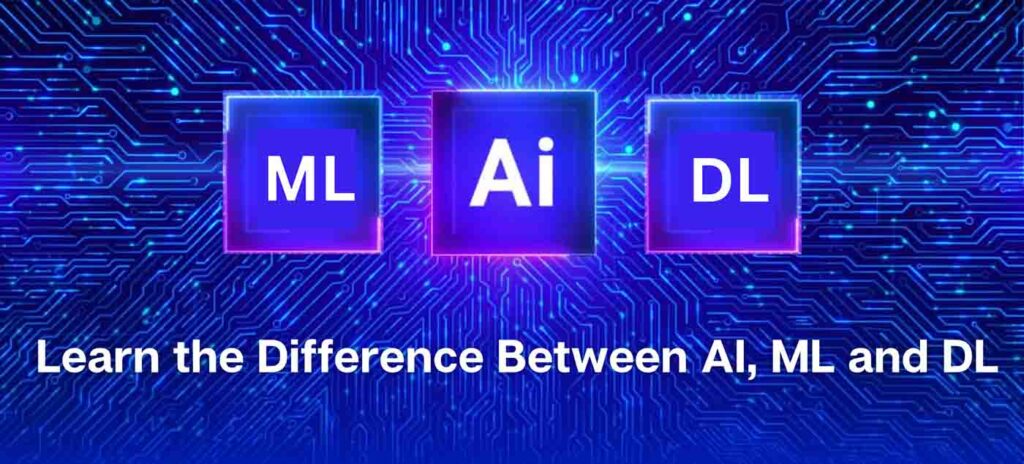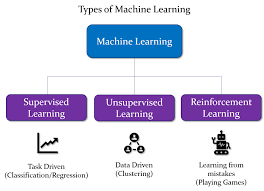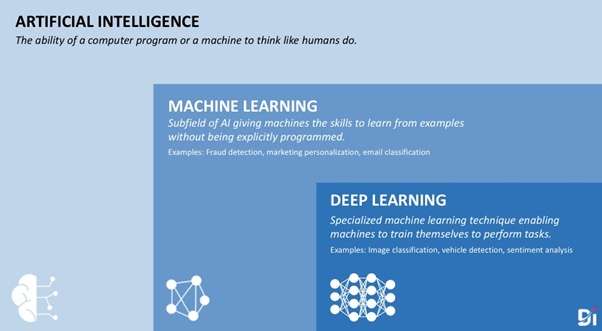
Artificial Intelligence has been around for ages. There are several narratives, theories, and fantasies around how AI will be a neat replication of the human brain. The fantastical approach to forecasting the evolution of AI has reached a point where we are often debating how AI will react when it passes beyond the highest benchmarks of human cognition.
In the field of computer vision, AI, Machine Learning, and Deep Learning have created some of the biggest advances. Computer vision is the systematic process for a machine to interpret an image and make it available for human or machine-driven decision-making. When done at scale – computer vision enables self-driving cars, security systems that can augment human capacities, and a lot more.
This article is a drill into AI, Machine Learning, and Deep Learning and how they are closely associated; however, they are not the same. And before their meaning gets diluted like peer ‘technology,’ it is critical for the entire business, engineering, and consumers’ community to understand the lines between the fields.
What is AI?
In the last few years, Cheaper processing GPUs and access to data have resulted in the exponential growth of AI research. Today, we stand on a behemoth sea of data that includes images, texts, videos, audios, geospatial information, etc. On top of that, our computing capabilities have made it possible to process this information, make meaningful observations, and program tasks associated with those observations.
3 Types of AI-based on capabilities
1. Narrow AI
Operates in a limited context; the algorithm is designed to perfrm a particular task as well as a human being. This can include recommending a video or flying a plane. While the output might be commendable, they are operating under limitations and constraints; one cannot extend the competence of such systems.
2. General AI
At this point, we have started treading over the fantasy land. ‘General Intelligence’ focuses on the broad application of human cognition or the ability to learn in complete detail from one’s past experiences without being explicitly instructed to do so. A kid learns that warm utensils can hurt her hands; not holding the wall can make her imbalanced, or two plus two equals four. These are different tasks that use different cognitive and sensory data points. But, a human being can perform them and learn from her experiences. The same idea is extended to an AI system that can learn from its experiences without each experience being statistically or manually parsed and then fed into the algorithm.
3. Artificial Super Intelligence
This is when the world of Sci-Fi can make more accurate commentary than the actual researchers in the field. The idea is that at this stage, machine intelligence exceeds human cognition. For instance – the movie Terminator showed how a machine exceeded human intelligence and started making its own decisions which were often more nuanced and complex than the human brain could process.
Did the progression of AI seem a little superfluous? That is because it is. AI, at its core, is an idea to understand ‘intelligence’ – not explicit cognitive capability, not the analytical or linguistic capability, but the subjective idea of intelligence.
What is Machine Learning?
Once we start stepping into the application of AI or how these results can be attained, the picture becomes more granular. AI has four broad areas – reasoning, autonomy, machine learning, and natural language processing. AI is the broad idea under which ML and Deep Learning operate.
In simplest terms – machine learning focuses on algorithms that can learn from experience and improve output quality. An algorithm can achieve this feat by executing supervised learning, unsupervised learning, or reinforcement learning.

Image Source Credit
1. Supervised Learning
Supervised learning requires two variables – an input variable (X) and an output variable (Y). The model is trained on a dataset with X and Y variables known. The model then performs a classification or regression analysis and ‘learns’ from the dataset. Later, on a dataset with only the X variables available, the model should forecast Y variables with a reasonable degree of accuracy.
2. Unsupervised Learning
This form of learning is recommended for exploratory phases of processing a dataset. Unlike supervised learning, the dataset does not have X and Y categories, rendering it ‘unlabelled.’ The ML algorithm is engineered to cluster these variables using statistical processes. This can help make more sense of available data when we do not have all the information required to classify it.
3. Reinforcement Learning
Reinforcement can be termed as a continuous feedback loop. The algorithm acts like an agent who consistently performs actions. It is rewarded for accuracy and penalized for inaccuracy, with both the rewards and penalties working as feedback. Thus, with continuous iterations, the algorithm should ideally get better at producing quality output.
What is Deep Learning?

Image Source Credit
Deep Learning uses our learnings of the brain’s anatomy. Deep within the human mind, neural interactions establish our understanding of the world around us and make connections. A neuron stores specific information, and with its ‘connection’ to another neuron, our brain can process information.
Deep learning algorithms analyze data with a logical structure similar to how a human brain functions through the use of both supervised and unsupervised learning. Just like the neural network in a human brain, a deep learning system uses thousands of layers of hierarchical or connected neural networks to filter, highlight, and locate the smallest material deviation in systems while ensuring enough room for natural variance. This way, there is a higher probability of finding a useful pattern at the end of the process.
Deep Learning uses three commonly used neural networks to execute this approach:
1. Convolutional Neural Networks (CNN)
Building on the idea of the neural network in the human brain, a CNN has several layers of neural networks that work to understand an image as input. It is an extension of ML and primarily used in computer vision applications. A CNN has several layers of neurons. Each layer of the neurons assigns a certain weight to a particular part of the image’s interpretation. After putting all these weights together, a reasonable output of understanding the image is attained.
2. Recurrent Neural Networks (RNN)
RNN is a neural network ideal for datasets where the sequence of information is essential. This is the reason why RNNs are popular in NLP, where sentences are analyzed. Each neuron in the RNN has a ‘memory’ that lets it see the historical computation. This way, each subsequent computation in the neural network is dependent on the last stage of computation.
3. Recursive Neural Networks
Recursive neural networks have one key contrast with the neurons in the brain – it has hierarchical layers. In contrast, the neurons in the brain can easily connect with the close ones in its proximity. Hence recursive neural networks operate without the focus on the sequence in terms of time. Each element of the input is passed through the network in a hierarchical method.
Conclusion

Image Source Credit
To summarize it all – AI precedes ML, which precedes Deep Learning. AI is a vast and fast-growing area of computing with several methods being tested with an accelerated pace of automation, unlocking new horizons of efficiencies. But Machine Learning, with a specific focus on Deep Learning, is attributed to much of the progress attained in the field in the last few years.
AI, ML, and Deep Learning applications are now extending to processes once considered to be ideal only for human beings – such as visual inspection of mundane and repetitive tasks. In our last blog, we covered how AI helps accelerate compliance and drive effectiveness in remote inspection.
You can use the power of AI & Deep Learning to streamline your operations and make your compliance & security standard operating processes more robust while augmenting the capacity of your teams. Click here to learn how.
Now that we have a clear understanding of AI, ML, and Deep learning in our next blog we will go deeper into Computer vision and its role in automating visual inspection. We would love to hear from you write to us info@aividtechvision.com